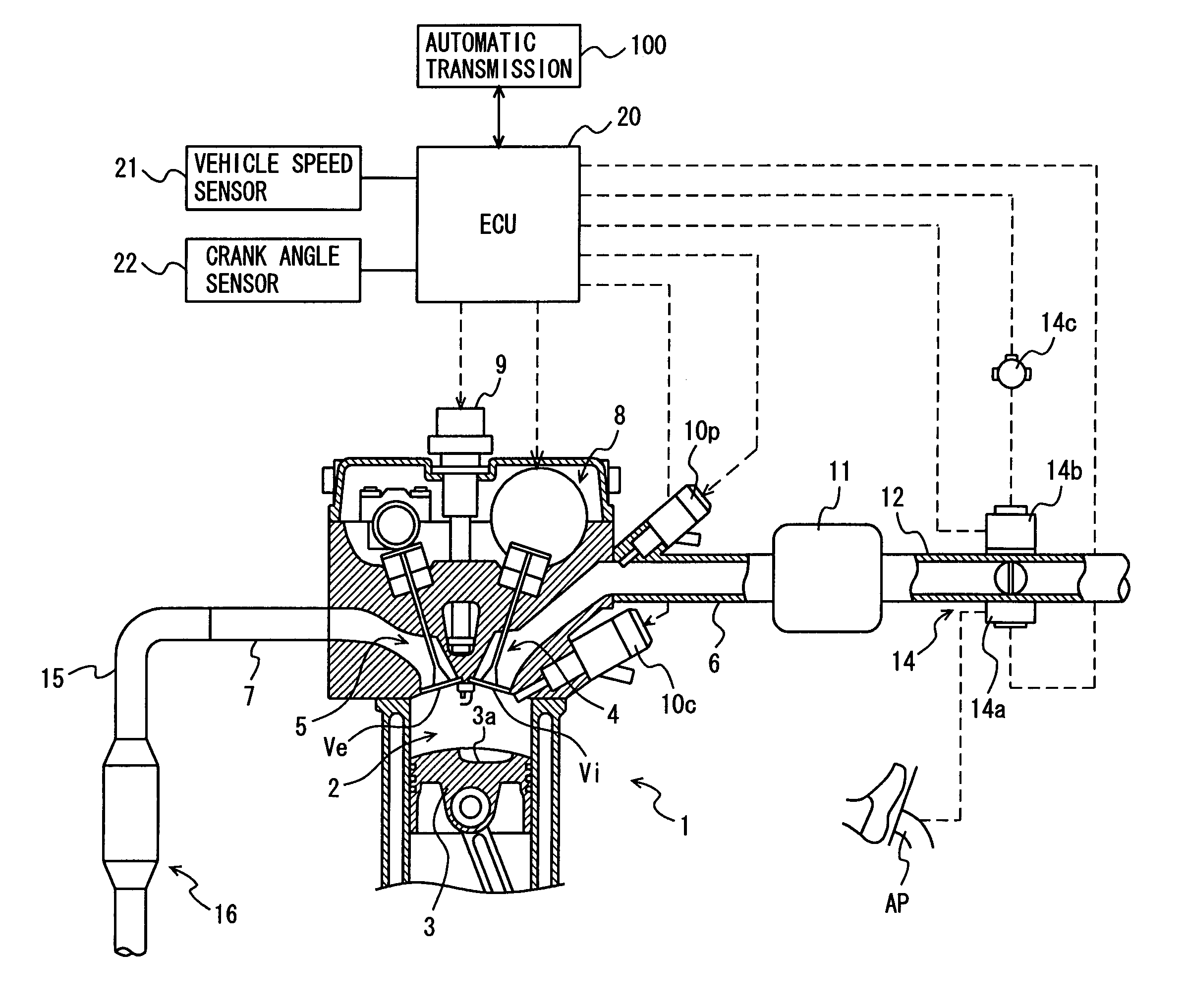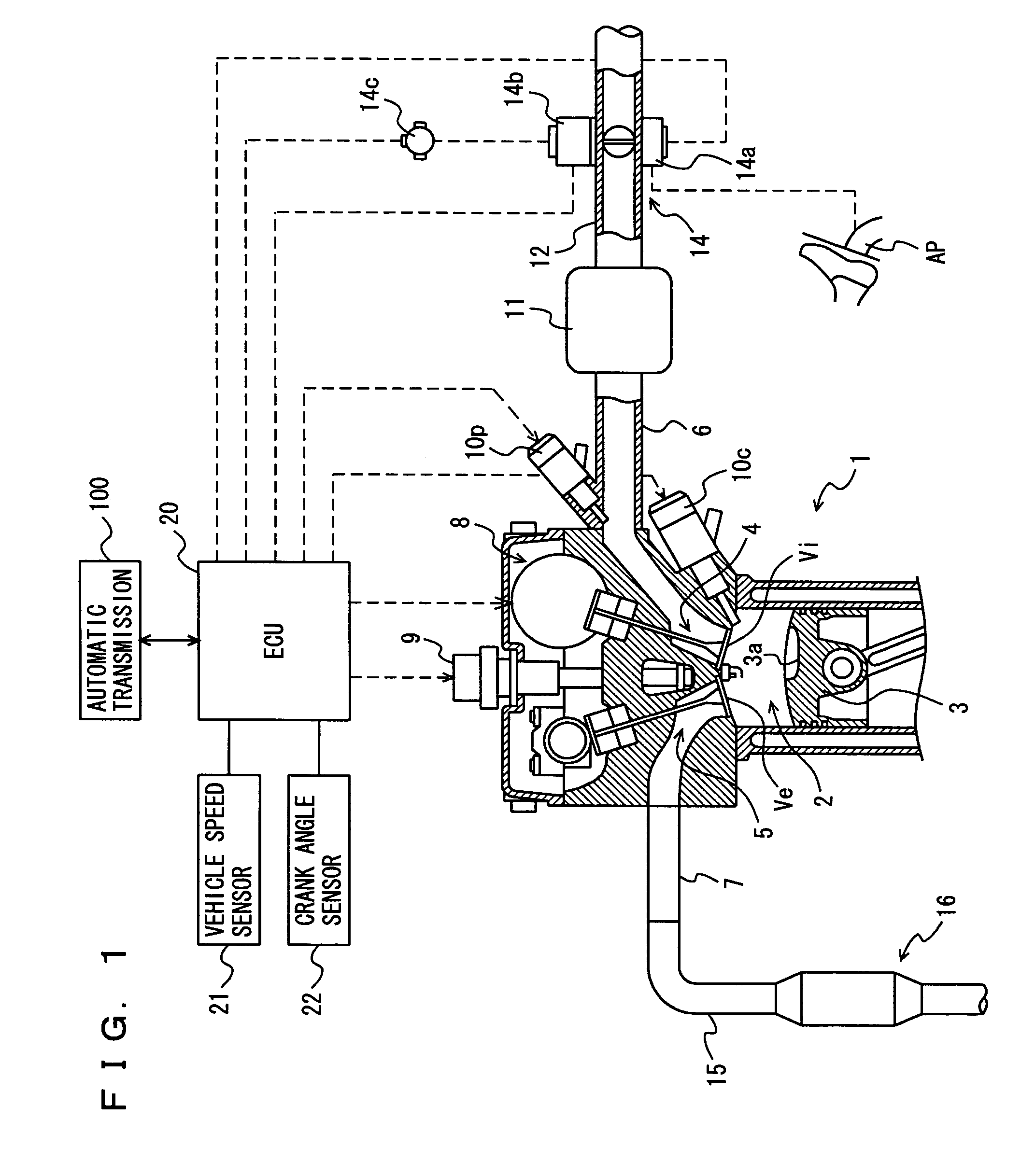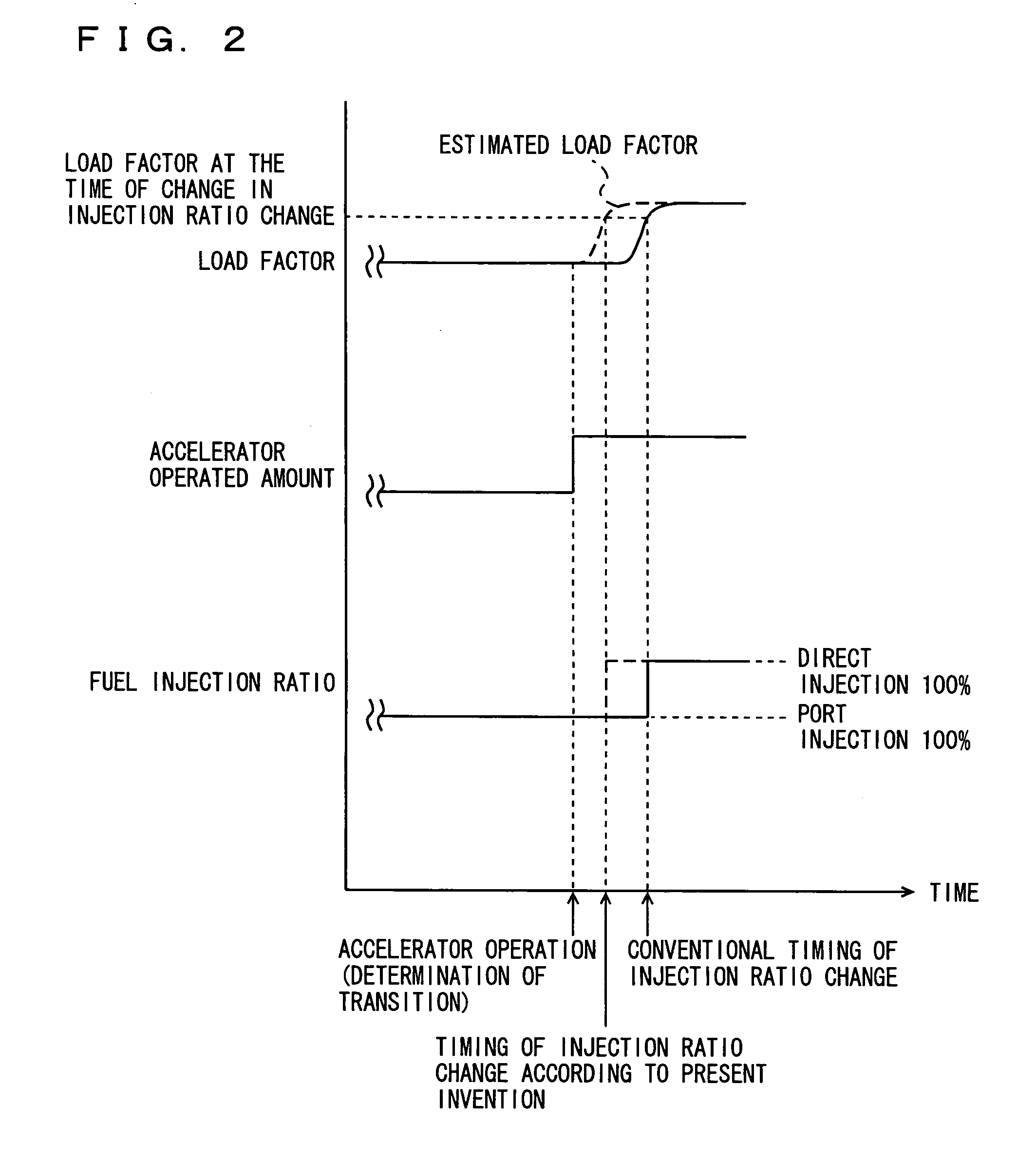Device and method for controlling internal combustion engine
a technology of internal combustion engine and control device, which is applied in the direction of electrical control, process and machine control, instruments, etc., can solve the problems of difficult to achieve the transition state such as acceleration, the effect of suppressing the torque fluctuation of the internal combustion engin
- Summary
- Abstract
- Description
- Claims
- Application Information
AI Technical Summary
Benefits of technology
Problems solved by technology
Method used
Image
Examples
Embodiment Construction
[0034]A best mode for carrying out the present invention will be described hereinafter with reference to the drawings.
[0035]FIG. 1 is a schematic diagram of a configuration of an internal combustion engine to which a control device according to the present invention is applied. An internal combustion engine 1 shown in FIG. 1 is implemented as a multi-cylinder internal combustion engine for a vehicle (for example, a 4-cylinder internal combustion engine, although FIG. 1 shows only one cylinder). Internal combustion engine 1 receives power from a not-shown crankshaft, as a result of reciprocating motion of a piston 3 caused by combustion of an air-fuel mixture in each combustion chamber2. Though internal combustion engine 1 is herein described as what is called a gasoline engine, the present invention is not limited thereto and the present invention is naturally applicable also to a diesel engine.
[0036]As shown in FIG. 1, an intake port 4 communicating to each combustion chamber 2 is ...
PUM
 Login to View More
Login to View More Abstract
Description
Claims
Application Information
 Login to View More
Login to View More - R&D
- Intellectual Property
- Life Sciences
- Materials
- Tech Scout
- Unparalleled Data Quality
- Higher Quality Content
- 60% Fewer Hallucinations
Browse by: Latest US Patents, China's latest patents, Technical Efficacy Thesaurus, Application Domain, Technology Topic, Popular Technical Reports.
© 2025 PatSnap. All rights reserved.Legal|Privacy policy|Modern Slavery Act Transparency Statement|Sitemap|About US| Contact US: help@patsnap.com



